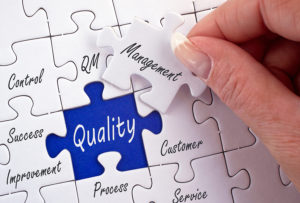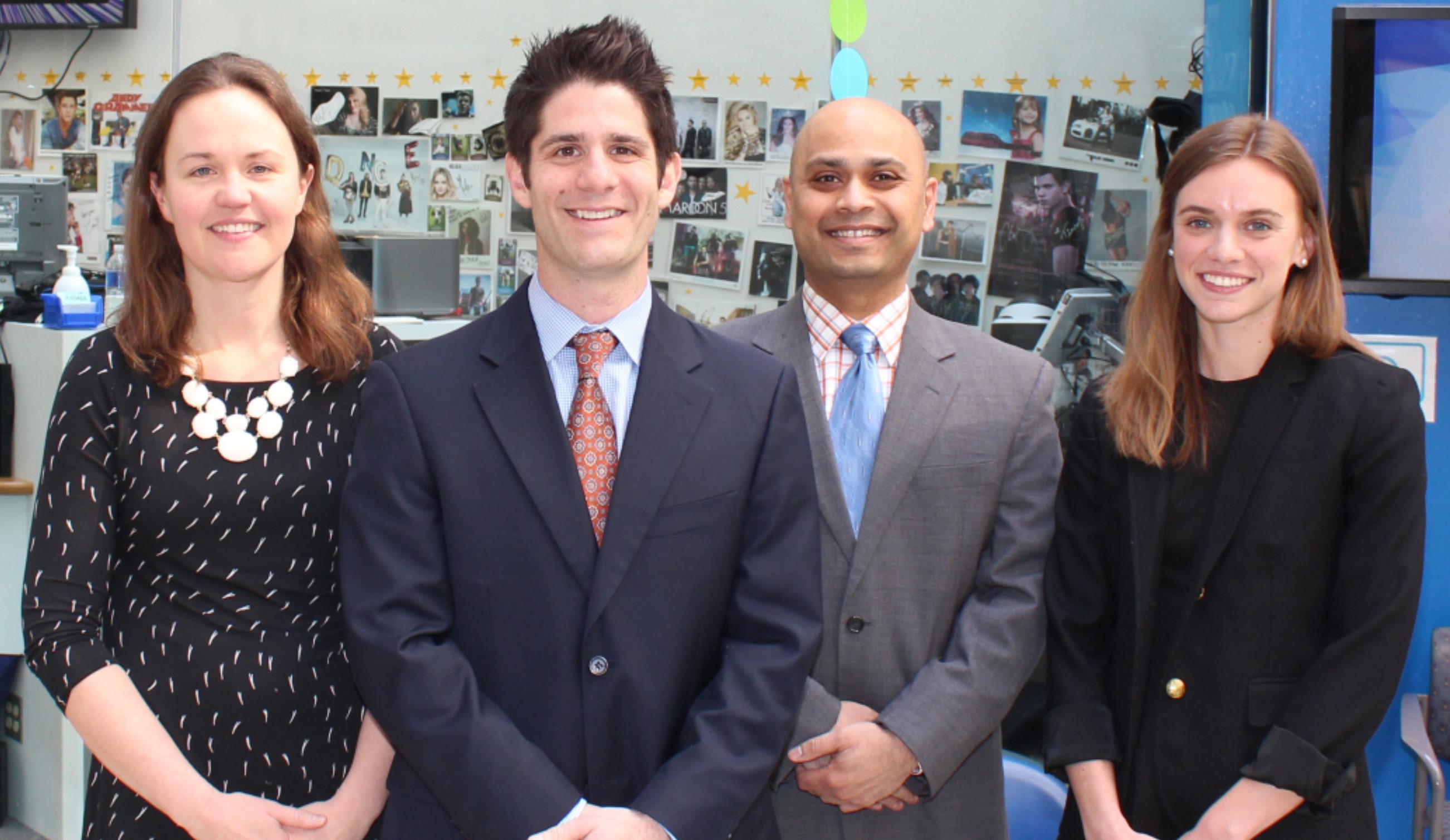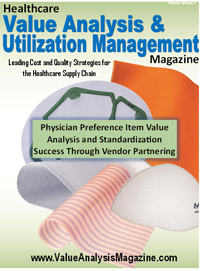(VAMag) Could you tell us a little bit about your professional history and how you got into value analysis?
Matt: I have been with CHOP this August at least seven years. Before that I was with GE Capital, the financial arm of General Electric, for 12 years. So, I didn’t have healthcare experience. I got to a point in my career at GE where I wanted to do something bigger than myself. My wife is a nurse. She would talk about what she was doing. Comforting and caring for people, holding people’s hands when they were dying. Then she would ask me how my day was, and I didn’t have a great answer.
We were thinking about having kids and having a legacy where daddy worked for a company that did good things and he cared about people more than himself. So, at that point, I investigated healthcare. I just don’t know why I didn’t think that healthcare was a business. Very quickly, I saw many opportunities in healthcare for process improvement people, which was my expertise from GE. A lot of my career at GE was being a Lean Six Sigma master black belt. I saw an opportunity at CHOP and applied.
In the first year, there were a lot of different projects I was involved in from surgical flow to patient flow. But in year two or three there was an operating plan project that was initially called CHOPtimize that was geared toward saving $45,000,000. I was the process improvement person on the team that was aligned to the senior leaders on that project. Joni Ritter, who is the VP of supply chain at CHOP, was the champion of that project.
It was centered around money, but at that point in time there was a lot of discussion around value equation and how it can’t be just about price and it must also be about safety and outcomes. So, we teed it up that way and had a lot of success for the three years that it was on the operating plan.
When the project was at a certain point, there was an opportunity within supply chain. I never thought I was going to be a supply chain person, but that’s how I entered supply chain. I was the Capital Manager for two years and then finally, there was a need for a traditional value analysis manager that centered on the need for all new product introductions to be reinvented.
We had serious safety events for which we conducted some root cause analysis. It was in part due to this process that I suggested to management that although I didn’t care if it was me doing it, we should do something different with value analysis. As we talked more about the concept and how we could structure it and what the vision was, I stepped into that role. So, it was a new role. This is our CHOPtimize Program and I’m our Value Analysis Program Manager.
(VAMag) With VA being a natural evolution of the triple aim for cost, quality, and outcomes, how does your Lean Six Sigma background help you in your role as Value Analysis Program Manager?
Matt: I think it helps to think about the situation more broadly than traditional value analysis. So, I think a lot of what I’ve read and learned and spoken about with my peers at conferences and conversations that traditional value analysis was a supply chain driven activity was narrowly focused. Not knowing anything about supply chain when I was hired or when I took on this new role, my mindset was, well, I just don’t want to understand this product or this purchased service but I want to understand how it’s used and I want to understand the people who use it.
(VAMag) CHOP is known for being very innovative in cost management, specifically bringing cost management to the bedside with your nursing shared governance team. The program has been highly praised in the nursing community, specifically at Magnet. Could you share a little bit about that, the story of the successful bedside program with your value analysis?
 Matt: There are two versions of it and there are two parts of the journey. There is the first part which was part of the operating plan, a project that was coined CHOPtimize and that had a three-year run. We never wanted it to be just another project so we reinvented ourselves to include the traditional value analysis type activities. When we were going through that first three years we asked ourselves how we would get to the desired outcome. How do we reduce costs while at the very least maintain safety and outcomes and keep true value? Then we hit the jackpot. We realized you increase safety, increase outcomes, and reduce costs. That’s the total jackpot. And the biggest driver was embedding it with the nurses who use these products or services.
Matt: There are two versions of it and there are two parts of the journey. There is the first part which was part of the operating plan, a project that was coined CHOPtimize and that had a three-year run. We never wanted it to be just another project so we reinvented ourselves to include the traditional value analysis type activities. When we were going through that first three years we asked ourselves how we would get to the desired outcome. How do we reduce costs while at the very least maintain safety and outcomes and keep true value? Then we hit the jackpot. We realized you increase safety, increase outcomes, and reduce costs. That’s the total jackpot. And the biggest driver was embedding it with the nurses who use these products or services.
You know you hit the jackpot when a nurse said, here’s a problem at the bedside to solve. The data from the utilization management standpoint also said yeah, we’ve got something going on and we’ve got some information to support what you’re saying. Next, we quickly identified a big group of projects and our intent was to create this army of process improvement individuals at the bedside, turning all these nurses somehow into black belts as we went along. We tried to do some training and embed that culture and Lean Six Sigma into that group and it was hit or miss. We had some big successes and those are some of the projects that have been presented at Magnet. There have been some successes where, for the very first time, a frontline nurse had a process improvement project that improved safety, and has cut some costs out of the organization.
(VAMag) Would you share a few key components, or should I say your “secret sauce,” for making your program a success at CHOP?
Matt: One strategy that differentiates us is that we developed a vision statement and a mission statement. The strategic areas of focus are our long term five to seven year strategy, which aligns to those strategic areas of focus like processes and systems, communication, relationships, and data analytics. These are the things that transcend value analysis that could be part of any business. Most importantly, we make sure that we align everything to our mission, our vision, and we make sure all of that aligns back to supply chain’s strategic direction, as well as the organization’s strategic direction and mission. So, I think that’s one of the areas that is part of the secret sauce because it seemingly doesn’t exist in every organization.
(VAMag) When you say process, you’re not just saying a new product request comes in and you bring it to the committee. You’re talking about how you define a project, correct?
Matt: Our prior VA program really wasn’t well-defined. It wasn’t a program. We talked a little bit about it in terms of the traditional value analysis work that we did around new product introductions. It was one person trying their best to get products that were requested and that patients and staff needed, but it wasn’t reliable, wasn’t repeatable, and it wasn’t down on paper. It wasn’t facilitated by systems or data. It wasn’t any of these things. And it wasn’t my predecessors’ fault or their predecessors’. We now know what the big processes are in play here that we really must think about. We had to determine whether to re-engineer the VA process or design a new process, but either way we needed to reinvent it with our stakeholders in and outside of supply chain who said there were opportunities for improvement.
(VAMag) Speaking of your advanced VA model, you created a brand. It was a part of a major initiative and now has evolved into CHOPtimize. Could you tell us how that unique branded approach helped your value analysis program gain understanding, acceptance, and ultimately thrive?
Matt: The word CHOPtimize came from that first iteration of the operating plan project and it was a series of focus groups at the beginning of that project that put the framework and fundamentals together for that major initiative. We took it to 10-15 focus groups, hundreds of people, and asked them for a name that we could gravitate towards. What we were after was creating an identifiable brand. When you think of Apple or McDonald’s, you can identify their symbol and brands.
Therefore, we wanted this to be embedded in the culture of CHOP as a value mindset forevermore. And so, having something to gravitate toward like an anchor was important. We set out and we developed a name. We also worked carefully, believe it or not, with our marketing and PR teams to develop a logo to create stationary and PowerPoint templates. Whenever you saw a leadership briefing, a meeting, a one-on-one conversation, you would see that logo, you would see that brand, and you would start to think about what the brand is all about. And if you didn’t know, hopefully you would ask about it.
Again, it’s about value added. As we came to the end of the three-year run on the operating plan and were thinking about how to revamp our traditional value analysis program, we said to ourselves, well, we’ve got great traction on this word CHOPtimize and the value set, the mindset, the projects that we’ve done, and the relationships that we’ve built. Why not build on this further?

(VAMag) In today’s VA world, access to good data is the key to every team’s success. How does your program sift through all the available data and evidence to find cost effective, quality value analysis results?
Matt: Our differentiator is what we termed advanced analytics. That was when we set out two years ago and we said, what’s our vision, what’s our mission, what are the strategic areas of focus? This ability to incorporate clinical information because it’s around a value equation was key to what I was focused on. And so, we have a variety of traditional ways to look at costs and inventory – we have internal information that we can look at and we have our GPO tools that we look at. They’re very traditional in the sense that they focus on finance, inventory management, and cost. We needed to figure out how to embed the numerator of the value equation, the safety and the outcomes, that was one of our primary areas of focus.
(VAMag) From a big picture standpoint, where do you think value analysis is going in the next three to five years?
Matt: I can answer it in two different ways. From what I’m hearing from my peers and my readings, I think VA will become more towards what we’ve done in the past two years. That is making your value analysis program a true program and going from the one-person-show with a supply chain focus and limited scope to expanding the process to be more utilization management minded.
I do hear that other organizations are beefing up their value analysis programs by hiring more people. I hear that they’re building some of these process improvement groups as we have done at CHOP which of course I am a proponent of.





